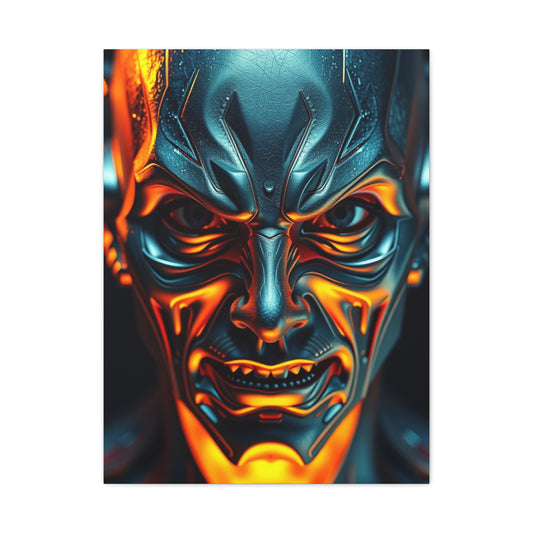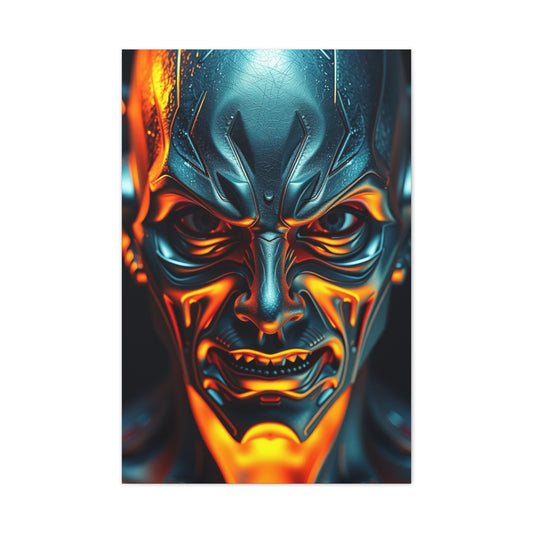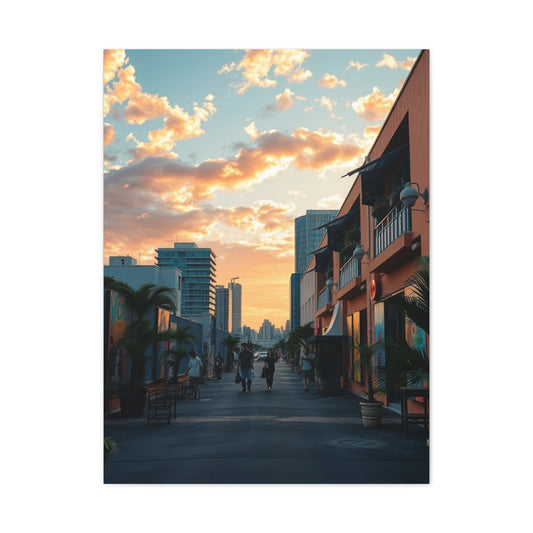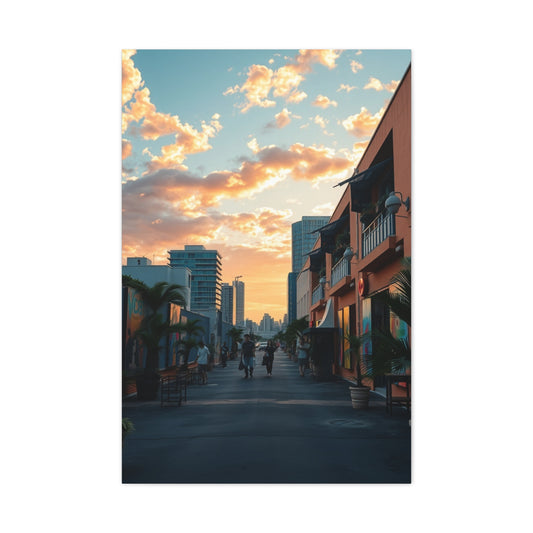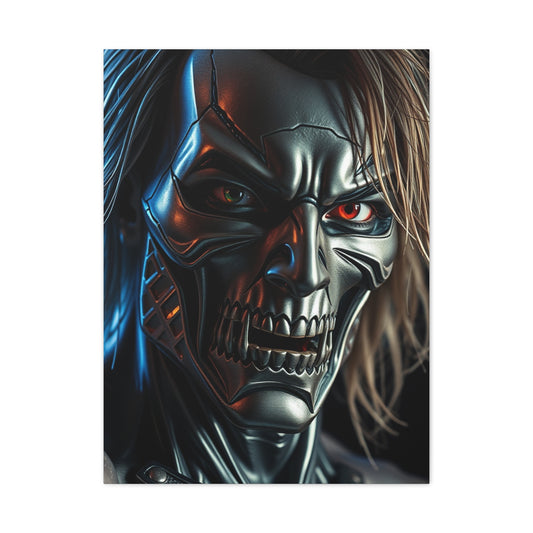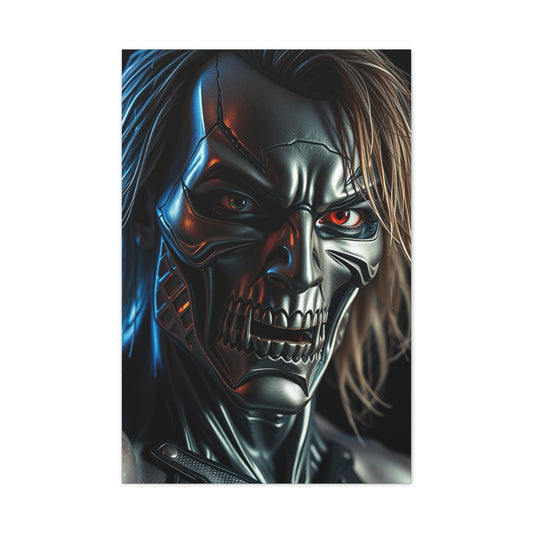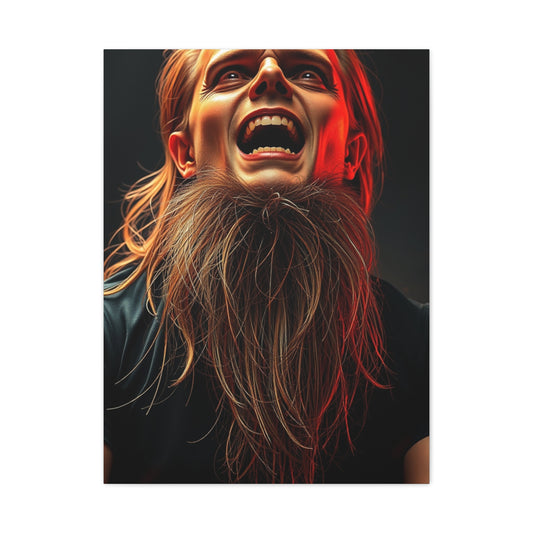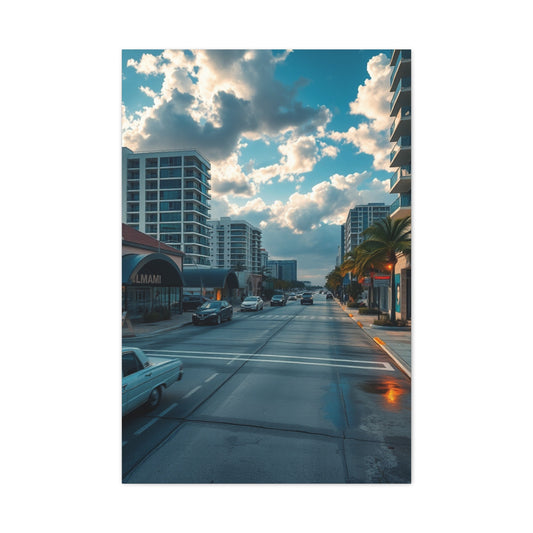We’ve all experienced that moment where someone pulls out a camera and says, “Let’s take a funny picture!” Suddenly, you’re expected to be clever or silly on the spot—and your mind goes blank. While humor might seem spontaneous, photographing it successfully takes a bit of observation, quick thinking, and a touch of creativity. Fortunately, there are techniques you can use to capture light-hearted, playful moments wherever you are. Below are some creative, respectful, and laugh-inducing ways to take funny photos, whether you’re in nature, at a party, or hanging out with friends.
Spot Humor in Your Environment for Natural Laughs
Funny photos aren’t always about costumes or carefully planned scenarios. Some of the most genuine laughs come from spontaneous, everyday life. If you learn to observe the world through a playful lens, you’ll discover humor hiding in plain sight. These unscripted moments are golden opportunities for funny photography, often more effective than anything staged.
Start by spending time in locations where life unfolds with unpredictable rhythm. Local parks, neighborhood markets, playgrounds, train stations, and festivals are excellent places to begin. These areas are full of dynamic human behavior and interactions, which create plenty of room for unplanned visual comedy. You might see a child wearing a superhero cape on a swing set or a person unknowingly walking around with a price tag still stuck to their shirt. These moments come and go quickly, so your ability to spot them is key.
Animals, in particular, offer endless material for funny photos. Their quirks and expressive behavior—like a dog rolling in the grass mid-walk or a bird making a comically angry face—make them perfect subjects. Birds tilting their heads at odd angles, cats leaping in awkward poses, or pets staring at reflections are prime examples of humor in the wild. Wildlife parks, zoos, or just your backyard can provide countless comedic scenes if you stay alert.
Even inanimate objects can create unexpected humor when placed in the right setting. A shoe hanging mysteriously from a power line, a chair precariously balanced on a balcony, or a mannequin dressed in mismatched clothes all have potential for quirky storytelling. The humor arises from the contrast between what’s normal and what’s odd or exaggerated.
To capture these fleeting events, set your camera to continuous shooting mode and use a fast shutter speed. Street photography settings work well here: try shutter speeds above 1/500s and a slightly higher ISO to freeze motion. If you're using a smartphone, enable burst mode so you don’t miss the exact moment when the unexpected unfolds.
|
Related Catagories: |
Lighting plays a significant role as well. Natural light offers the best setting for capturing clarity and detail in humorous expressions. Overcast skies are perfect for even lighting, while bright sunlight adds contrast that can heighten dramatic—and often funny—visuals, especially with shadows or reflective surfaces.
Try to blend in with your environment so your subjects remain natural and uninhibited. Funny photos often emerge when people are relaxed, unaware of the camera, or just going about their routine. Avoid interrupting or drawing attention. Instead, observe like a quiet documentarian, waiting for the humor to emerge on its own.
Finally, consider pairing these spontaneous scenes with clever titles or captions to enhance the humor. A photo of a pigeon standing on a “No Loitering” sign or a dog sleeping on a yoga mat can be instantly funnier when accompanied by a witty phrase.
With time, you’ll develop an eye for oddities and moments of comedic timing that others overlook. The more you practice, the more intuitive it becomes to frame humor naturally without forcing it. It’s all about tuning into the absurdity that everyday life quietly offers.
Let Go of Perfection and Shoot Without Hesitation
When it comes to funny photography, trying to control every element often works against you. Humor thrives in chaos, imperfection, and the unexpected. If you're too concerned with symmetry, lighting perfection, or flawless framing, you may miss the moment entirely. That’s why letting go of perfection is one of the most important habits to develop when shooting for laughs.
Many photographers hesitate before clicking the shutter, worried that the scene isn’t composed correctly or the background is too cluttered. But when humor is the goal, a slightly messy frame often adds to the authenticity. An imperfect setting can create context that heightens the silliness of the scene—like someone tripping over a laundry basket or struggling to fit into a too-small chair surrounded by daily clutter. These little details can become part of the joke.
Shoot freely and shoot often. Using burst mode or rapid-fire clicks will increase your chances of capturing a facial expression or physical gesture at its funniest. People laughing mid-sentence, children caught mid-jump, or pets reacting to a noise all happen in a split second. Trying to line everything up might cause you to miss those split-second facial contortions or gestures that make a picture truly funny.
From a technical standpoint, prioritize speed and spontaneity. Use aperture priority or shutter priority mode to control light quickly without fussing over manual settings. For fast action, keep your shutter above 1/500s or even 1/1000s. Choose a wide aperture (f/2.8 to f/4) to create separation between your subject and background while maintaining enough clarity for motion.
Don't let blurry shots or overexposed frames hold you back. Sometimes, these so-called mistakes contribute to the comic effect. A slightly blurry image of someone flailing or slipping can exaggerate the motion in a way that enhances the humor rather than detracts from it.
It’s also helpful to keep your gear as lightweight as possible. When you’re aiming to capture spur-of-the-moment scenes, bulky equipment can slow you down. A good mirrorless camera, a versatile lens (like a 24–70mm), or even a modern smartphone is more than capable of getting the job done. What matters most is accessibility and reaction speed.
Emotionally, letting go of perfection means allowing yourself to have fun. This attitude can put your subjects at ease, which is essential when photographing people in funny situations. If your energy is relaxed and playful, the people you’re capturing will mirror that and become more animated and expressive. Encouraging your subjects to be goofy, laugh freely, or improvise their own poses can lead to unexpectedly delightful images.
Don’t worry about getting the ideal shot right away. Take multiple angles, play with framing, and allow for accidents. You might discover the best photo was taken in the margins—just before or after the moment you thought was the main attraction.
If you're shooting in a social setting like a party or festival, avoid pausing the action for the sake of a picture. Blend into the background and shoot while the energy is flowing. People naturally show their funniest sides when they aren’t performing for the lens. Capture that candid energy, and you’ll get images that feel real, spontaneous, and genuinely funny.
Ultimately, funny photography is about reaction, timing, and confidence. The most memorable photos happen not when everything is perfect, but when you embrace imperfection and lean into unpredictability. So point your camera, hit the shutter, and enjoy the messy, magical process of capturing laughter as it happens.
Play with Angles and Tricks for Optical Humor
Funny photography doesn’t always have to be spontaneous. In fact, planned humor using visual tricks can be just as entertaining and even more visually striking. One of the best ways to explore this is through the creative use of angles, scale manipulation, and forced perspective. These optical illusions allow you to bend reality and craft images that are both clever and comical.
Forced perspective is a timeless technique where you manipulate the distance between subjects and objects to alter their perceived size. For example, a person might appear to pinch the sun between their fingers or “step on” a distant building. This approach relies on careful positioning of the camera, precise alignment of subjects, and a touch of imagination. You don’t need fancy equipment to do this—just a keen eye and a willingness to experiment with positioning.
Architecture can serve as a brilliant backdrop for these illusions. Use long pathways, symmetrical arches, or reflective windows to create humorous photo opportunities. For instance, someone might look like they’re walking up a wall if you rotate the image or frame them cleverly near a stairwell. Buildings with unusual shapes can create comedic distortions when photographed from extreme angles.
Natural elements like clouds, trees, or even water surfaces can also contribute to funny compositions. You could align a photo so that a cloud looks like it’s being inhaled like steam from a cup, or angle a tree branch so it appears to poke someone’s ear. When your imagination interacts with your environment, humor often follows.
Don't forget about the power of shadows. A well-timed shadow can create hilarious effects, like making a person appear to have horns or an animal shadow mimicking a human activity. Play with light at different times of day to manipulate these effects for maximum impact.
You can also involve multiple people in the frame for added effect. One person can pretend to hold or toss another who stands several meters behind them. This creates the illusion that they’re miniature or airborne. These kinds of setups are great for family photos, group outings, or travel photography where you want to bring fun into the frame.
Angles can influence expressions too. Shoot from below to exaggerate someone’s jawline or from above to make their head appear oversized compared to their body. These distortions are light-hearted and work especially well with kids, who tend to enjoy the silliness of looking cartoonish in photos.
Taking it a step further, consider using mirrors or reflective surfaces to introduce visual surprises. Photographing someone through a distorted funhouse mirror or warped glass adds an instant comedic element. Even puddles after rain can offer upside-down perspectives that look surreal and funny when framed right.
Smartphones also open up a variety of apps that simulate optical illusions in real-time. With AR tools or multi-camera lenses, you can preview your composition and tweak it live until the funny effect is just right.
The key to mastering this technique is trial and error. Don’t be afraid to take several test shots, reposition your subject, and adjust your angle until the visual joke becomes clear. Each adjustment brings you closer to that perfect frame where illusion meets humor.
Add Humor Through Strategic Use of Props
Props are the secret sauce of funny photography. Whether you're staging a silly portrait, capturing candid moments, or designing a theme-based shoot, the right prop can transform an ordinary photo into a hilarious masterpiece. They break the ice, inspire playful behavior, and help people tap into their goofy side, especially in front of the camera.
Simple, low-cost props like fake glasses, oversized hats, wigs, or emoji paddles can immediately change the tone of a shoot. These items are fun to wear, easy to carry, and versatile enough to use across various themes. A well-placed prop can turn a regular pose into a laugh-out-loud image by exaggerating expressions, distorting proportions, or shifting the context of the photo entirely.
One of the most effective ways to use props is to contrast them with the setting. For example, placing a person in a tuxedo on a beach with a rubber ducky or having a toddler wear a superhero cape while sitting on a toilet seat can add absurdity and delight. Props like plungers, bananas, or frying pans can replace everyday items in unexpected ways for comedic effect.
For themed photo sessions, props add consistency and visual interest. A retro shoot might include boom boxes and neon glasses, while a pirate-themed shoot could feature inflatable swords, fake parrots, and eye patches. These elements create immersive environments that help the subjects fully embrace the character they’re portraying, which leads to more animated and expressive photos.
Pets respond especially well to props. Dress a cat in a bowtie or add a tiny umbrella to a parrot’s perch, and you instantly have a setup bursting with comic potential. Just be sure to keep the props safe and comfortable for animals—non-toxic materials and lightweight accessories are a must.
If you're photographing children, props can serve as both entertainment and distraction. Items like feather boas, funny masks, hand puppets, or musical toys keep their attention while encouraging spontaneous reactions. Many of the best funny photos of kids happen when they’re mid-laugh, wide-eyed, or totally absorbed in imaginative play.
Printable props are a great budget-friendly option. These can include mustaches, lips, hats, or speech bubbles printed on cardboard and glued to sticks. They’re perfect for photo booths or party setups, and they allow guests to choose how they want to express their own sense of humor.
Don’t limit yourself to store-bought props. Household objects, DIY crafts, and even food can make excellent comedic tools. A spaghetti strainer helmet, two cucumbers as binoculars, or a melon as a handbag—imagination is the only limit. In fact, the more out-of-place a prop seems, the funnier the result.
Storage and presentation also matter. Consider organizing your props in a vintage suitcase or toolbox for an added visual flair. This not only looks good in photos but also encourages subjects to explore and get creative during the session. You can even include prompts or challenges, like “take a selfie using three of these items” to spark engagement.
When photographing multiple people, coordinating prop use can enhance group dynamics. Give everyone matching hats, or assign different roles using labeled signs. For weddings, parties, or festivals, this leads to images full of character, storytelling, and shared laughter.
To elevate your work further, use props as part of storytelling. Imagine a photo sequence where a person receives a strange object, reacts dramatically, and then performs a goofy action with it. This narrative structure draws viewers in and gives your humorous shots greater replay value.
Lastly, don’t be afraid to experiment with digital props through editing apps. You can add animated sunglasses, silly hats, or comic-style overlays to enhance the original photo without any real-life setup. This is perfect for creating meme-style images, social media reels, or personalized digital greetings.
Props, when used strategically, amplify humor while adding layers of creativity to your images. They’re playful, accessible, and make it easier for people to let their guard down and embrace the fun. Whether subtle or outrageous, props are a timeless tool in every funny photographer’s toolkit.
Flip the Script with Unexpected Twists on Familiar Themes
Humor often shines brightest when it’s rooted in the unexpected. One of the most effective ways to spark laughter through photography is to subvert familiar stories, characters, or concepts. When people see something they recognize turned on its head, the surprise element becomes instantly engaging and entertaining. This technique not only makes for great comedy, but also shows off your creativity and inventiveness as a photographer.
Start by thinking about everyday symbols, popular culture icons, or commonly used phrases. Then, find a way to reinterpret them in a humorous or ironic context. For example, instead of photographing a superhero flying through the sky, show them pushing a shopping cart in a crowded grocery aisle, looking mildly annoyed at a long checkout line. These kinds of juxtapositions make audiences laugh because they take the extraordinary and ground it in the everyday.
You can also reverse traditional character roles. Imagine a wolf in grandma’s clothing calmly scrolling through a smartphone or a fairy godmother looking bored while waiting for a bus. Recasting familiar figures in mundane or unexpected scenarios is an excellent way to create visual jokes that are both clever and accessible.
Fairy tales, nursery rhymes, and comic book characters all offer a wealth of possibilities. Place Snow White in a coffee shop drinking an espresso, or show a vampire trying to apply sunscreen before heading to the beach. By blending fantasy and reality, you invite viewers to see these well-known characters in a fresh, light-hearted way.
Visual puns add another layer of humor. Taking idioms literally, like capturing a scene of someone "crying over spilled milk" or staging a shot of a person standing in an actual "pickle," adds a whimsical, absurd charm. Think of phrases like “butterflies in your stomach,” “breaking the ice,” or “walking on thin ice”—then bring them to life with props and expressions that lean into the absurdity.
You can also explore cultural references. Recreate famous paintings like the Mona Lisa or American Gothic, but with a humorous twist. Maybe the subjects are wearing pajamas, eating snacks, or distracted by their phones. These images become funny because they rely on the viewer’s prior knowledge while introducing a surprise element.
|
Related Catagories: |
Another effective approach is to explore “what if” scenarios. What if astronauts had to wait in line for coffee? What if the Easter Bunny had a day job at a laundromat? Asking these questions sparks creative ideas that can turn into unique and hilarious photographs. Try mixing historical or fantasy characters with modern technology and daily routines. The more absurd the contrast, the more amusing the result.
Costumes and settings play a crucial role in these setups. Choose backdrops that reinforce the contrast—like a knight in armor typing on a laptop at a coworking space, or a princess riding a bicycle through city traffic. These visual contradictions instantly stand out and draw the viewer into the joke.
Facial expressions and body language are essential for selling the humor. If your subject is acting out a twist on a classic theme, their expression should mirror the scene’s new tone—boredom, confusion, or exaggerated delight all add to the comedic effect. The funnier the character’s reaction, the more engaging the photo will be.
The key to flipping familiar themes is commitment. Don’t go halfway—immerse the subject fully in the environment and concept. A well-executed twist is not only funny, but also memorable. It encourages viewers to pause, reflect, and share the image with others.
Incorporating unexpected ideas into your photography allows you to stand out in a sea of visual content. By reimagining the familiar in playful, unconventional ways, you’ll invite your audience to laugh, think, and see the world a little differently.
Create Contrast by Pairing Unlikely Subjects
In photography, contrast is often used to highlight differences in color, light, or composition. But when applied to humor, contrast takes on a new form—juxtaposing subjects that clearly don’t belong together to create an image that’s instantly funny or thought-provoking. It’s about placing opposites side-by-side and letting the tension between them do the storytelling.
Unlikely pairings can come in many forms. Visual contrast is perhaps the most obvious. Photographing a massive Great Dane sitting politely next to a tiny Chihuahua instantly makes people smile. A muscular bodybuilder holding a kitten in one hand and a teddy bear in the other creates a blend of strength and softness that’s visually unexpected. These scenes work because our brains don’t anticipate such combinations, and the humor comes from that surprise.
Size isn’t the only way to explore contrast. Emotion is another powerful tool. Imagine photographing a crying clown next to someone laughing hysterically, or capturing a baby making a confused face while an adult wears a goofy grin. These expressions highlight emotional opposites in the same frame, and the dissonance often creates humor.
Objects can also be used to create funny contrasts. A worn-out sneaker sitting inside a luxury glass case, or a rubber duck placed on an elegant dining table next to a candlelit dinner setup can instantly alter the tone of the image. These odd pairings challenge the viewer’s expectations and often result in laughter or double takes.
Setting is another factor to play with. Photographing someone in full formalwear relaxing on a beat-up couch in a cluttered garage adds an element of absurdity. Or take a beachgoer, complete with floaties and sunglasses, and place them in a snowy field. The clash between the subject and their environment opens the door to endless comedic possibilities.
Use lifestyle opposites to further push the idea. A business professional in a forest reading emails, or a yoga instructor meditating in the middle of a fast food restaurant—these scenarios clash because they depict characters outside of their natural or expected habitats. That clash itself becomes the foundation of the joke.
Color and texture also offer tools for creating contrast. Photographing a brightly colored balloon against a grim, industrial background draws attention not only through visual aesthetics, but also through the mood difference. Happy versus gritty, smooth versus rough—these juxtapositions help enhance the visual comedy of the scene.
Interaction between the elements is key. Simply placing two different things side-by-side isn’t always enough. The more you show how they relate—or don’t relate—the funnier the result. If a kitten is napping on a spiky cactus pillow, the oddity of the situation is what makes it amusing. Similarly, a toddler calmly offering tea to a life-sized skeleton blends innocence with eeriness in a way that catches people off guard.
Juxtaposition can also reflect subtle commentary on society, culture, or norms, but always be mindful to approach such humor with respect and care. The goal is to be light-hearted and clever, not controversial or divisive. If your image relies on cultural contrast, ensure it’s inclusive and avoids stereotypes.
This technique works well in both posed and candid photography. You can either design your composition with contrast in mind, or simply train your eye to notice it in everyday moments. Sometimes a funny juxtaposition presents itself unexpectedly, like a pigeon standing on a "No Birds" sign or a toddler trying to push a shopping cart twice their size.
To capture contrast effectively, consider using a wide-angle lens to fit both elements into a single cohesive frame. Use depth of field to emphasize both the subjects equally, or use lighting to highlight the contrast without drawing too much attention to one over the other.
The beauty of using contrast for humor lies in its simplicity and versatility. By combining the unexpected and letting them share the same space, you create photographs that speak without needing explanation—making your viewers smile, pause, and maybe even laugh out loud.
Blend Surrealism and Humor for Whimsical Results
Conceptual photography is often seen as artistic and introspective, but that doesn’t mean it can’t have a sense of humor. In fact, combining surreal imagery with playful themes is a brilliant way to inject whimsy into your visual storytelling. When done thoughtfully, surreal humor leads to photos that are not only funny but also imaginative and visually captivating.
At the heart of surreal photography is the element of surprise. Viewers are drawn to images that defy logic and challenge what we know to be real. This opens the door to endless possibilities for comedic interpretation. Consider scenes like someone levitating while eating cereal, a person shaking hands with their identical clone, or a human-sized cat wearing business attire. These concepts catch the eye because they mix fantasy with absurdity, and humor arises from the unnatural yet oddly relatable scenarios.
Photo manipulation plays a major role in crafting these kinds of images. Tools like Photoshop or mobile apps that offer layering and distortion features can be used to shrink a person, duplicate them in the same frame, or place them in settings that defy real-world physics. For instance, imagine a person sitting on a chair suspended in midair over a city skyline or a child holding an umbrella under an upside-down waterfall. These surreal compositions grab attention and trigger laughter through their sheer impossibility.
Facial expressions and poses are crucial to selling the joke in surreal scenarios. A person floating calmly while reading a book is funny because it contrasts the extraordinary nature of levitation with a mundane activity. Exaggerated facial reactions—like shock, awe, or exasperation—further amplify the comedic impact. The stranger the situation, the more humorous a deadpan or over-the-top reaction can become.
Unusual body positioning can also enhance surreal humor. A person folded into a suitcase, appearing to crawl out of a television, or walking a giant banana on a leash creates a visual paradox that’s humorous by design. These setups rely on clever framing, strategic use of perspective, and sometimes props or editing assistance to achieve their full effect.
Using everyday items in unusual roles is another excellent way to blend surrealism and comedy. For example, you might photograph a toothbrush towering over a cityscape as if it were a skyscraper or stage a living room where all the furniture is made of food. The absurdity of the composition immediately sparks amusement, especially when viewers recognize familiar objects in unfamiliar contexts.
Another great approach is blending natural elements with fantasy. Photograph someone holding a lightning bolt like a light saber, or stage a scene where trees have human-like faces reacting to people walking by. These kinds of whimsical edits infuse a narrative dimension that’s both surreal and playful.
To make your images feel cohesive, pay close attention to lighting and shadows. Mismatched lighting in composite images can break the illusion and lessen the humor. If you're using artificial light, try to replicate the direction and color temperature of the original photo when adding digital elements. Seamless editing strengthens the surreal effect and helps viewers fully immerse themselves in the joke.
This genre of humorous photography is also a great platform for social commentary. You might stage a surreal image of someone tangled in digital cords representing social media, or a person being “downloaded” into a virtual world. These photos use surreal humor to provoke thought while still entertaining your audience.
Whether you’re using props, costumes, digital tools, or all three, the key is to remain imaginative and embrace the ridiculous. Surreal comedy photography doesn’t need to be perfect—it just needs to invite curiosity, wonder, and laughter.
Experiment with DIY Backdrops and Environments
Creating a humorous image often depends not only on the subject but also on the setting. While you can find comedy in the wild, sometimes it helps to design your own environment from scratch. Building DIY backdrops and miniature worlds offers a personalized way to inject humor, style, and creativity into your photos, whether you're working with kids, pets, or even inanimate objects.
Using homemade setups gives you total control over the look and feel of your composition. It allows you to exaggerate everyday scenarios, explore playful themes, or parody serious environments in ways that wouldn’t be possible on location. You don’t need a professional studio to get started—a corner of your living room and a handful of props can work wonders.
Start with simple materials like colorful bedsheets, cardboard, wrapping paper, and poster boards. These can be repurposed into walls, floors, and skies for your miniature world. A polka dot blanket can become a whimsical sky, while blue gift wrap can simulate water. Hanging a sheet with a quirky print or creating a wall out of comic pages instantly sets a tone of fun and mischief.
To add depth and interest, layer different textures and patterns. Use streamers as curtains, cut-out clouds from foam boards, or toilet paper rolls painted gold as columns for a royal bathroom. These tiny details can make your DIY set feel more immersive, which adds charm and context to your humor.
Toy props are especially useful in these scenarios. Tiny chairs, plastic dinosaurs, dollhouse furniture, or even LEGO pieces can help you build a world that feels quirky and cartoonish. Imagine photographing a hamster standing at a doll-sized podium or a child sipping tea at a table surrounded by action figures. These scenes make people laugh because they combine scale, absurdity, and storytelling in a single frame.
One of the most creative uses of DIY environments is the construction of fantasy or parody sets. For example, you might create a fake “celebrity spa” using cotton balls as towels, cucumbers over stuffed animals’ eyes, and empty lotion bottles as spa products. Or design a wrestling ring made from cereal boxes and string, featuring action figures as contenders and your cat as the unimpressed referee.
Handmade sets are perfect for photographing children, as they encourage interactive play. Give them props to wear or hold, such as crowns made from foil or cardboard swords, and let them engage with the world you’ve built. Their natural enthusiasm brings your comedic vision to life in unscripted ways.
Pets also make ideal participants in DIY sets, particularly when the environments are scaled to suit their size. You might create a tiny living room for your guinea pig complete with a couch made from a sponge and a television crafted from cardboard. Dress your dog in a chef’s apron and place them behind a mini kitchen counter for a cooking show parody.
Lighting is just as important in these settings. Use natural window light to avoid harsh shadows and keep colors vibrant. Fairy lights and small LED panels can also add a magical glow to your scenes, enhancing their surreal or fantastical feel. The right lighting can help elevate a simple setup into something that looks much more polished and engaging.
For added comic effect, incorporate motion and interaction. Photograph toys falling mid-air or capture the moment a cat knocks over a stack of toilet paper towers in a mock skyscraper battle. Action within your DIY world adds depth, dynamism, and laughter to your images.
Don’t shy away from imperfection. Slightly crooked props, visible tape, or offbeat scale can actually add charm to your composition. The point is not to create a flawless set but to embrace the playfulness of building a scene that invites joy, curiosity, and humor.
Ultimately, DIY backdrops and constructed environments allow for limitless creative expression. They offer a low-cost, high-impact way to turn silly ideas into visual stories that people will remember—and laugh at. Whether you're parodying real life or inventing your own comic universe, these setups help transform your imagination into tangible, photo-ready scenes that celebrate the fun side of photography.
Capture the 'Before and After' Effect
Another clever idea is to capture sequences. Use a photo series to tell a visual joke: for instance, the progression of someone trying to eat spaghetti, failing, and giving up. Or show someone prepping to run a race in a full tracksuit—only to reveal flip-flops in the last frame. The “before and after” format works perfectly for mimicking infomercial failures or life-hack parodies. It’s a brilliant way to highlight human exaggeration and playfully poke fun at expectations versus reality. You can combine the shots into a collage or post them as a swipe-through series online.
Play with Scale for Absurd Results
In photography, manipulating scale can lead to some of the most surreal and funny visual moments. Try photographing a toy in a real-world setting to make it look like it's come to life. Or use a macro lens to zoom in on something tiny and present it as though it’s enormous. A fun idea is to take an object like a spoon and stage it as if it’s a canoe. Use backgrounds, lighting, and props to commit fully to the illusion. You can also flip the concept—make large items appear comically tiny by playing with distance and placement.
Use Everyday Phrases as Literal Inspiration
Turning idioms and sayings into visual gags is a timeless way to create funny, engaging photos. Think of expressions like don’t cry over spilled milk or on cloud nine. Now, how would you photograph those literally? Maybe you stage someone lying on a pile of pillows with numbered clouds, or someone sadly watching milk drip onto the floor. This approach requires a mix of clever thinking, prop sourcing, and creative staging, but the results can be witty, smart, and shareable.
Keep It Light-Hearted and Respectful
While pushing creative boundaries is fun, it's important to always consider your subject’s feelings and public perception. What one person finds hilarious might be offensive or hurtful to another. Avoid humor that targets specific cultures, beliefs, or body types. The aim is to bring joy—not embarrassment or discomfort. A great rule of thumb: if you wouldn’t feel comfortable being the subject of the photo, consider whether someone else would. Make sure your images bring positivity and inclusivity. When in doubt, ask your subjects for permission and share the laughs with them before sharing the image online.
Final Thoughts: Turn Everyday Moments into Laughter
Funny photography is more than silly expressions—it’s about capturing life’s joy in surprising, thoughtful, or chaotic ways. Whether you’re crafting a story or catching a perfect split-second mishap, humor brings relatability and warmth to your visuals. Look for contrast, exaggeration, irony, and unexpected twists. Don’t be afraid to try something outrageous or silly. The process itself should be fun and light-hearted, just like the images you’re trying to create.
So the next time someone says, “Let’s take a funny picture,” you won’t freeze up—you’ll smile, frame the moment, and confidently click, knowing exactly how to find the funny in every frame.










